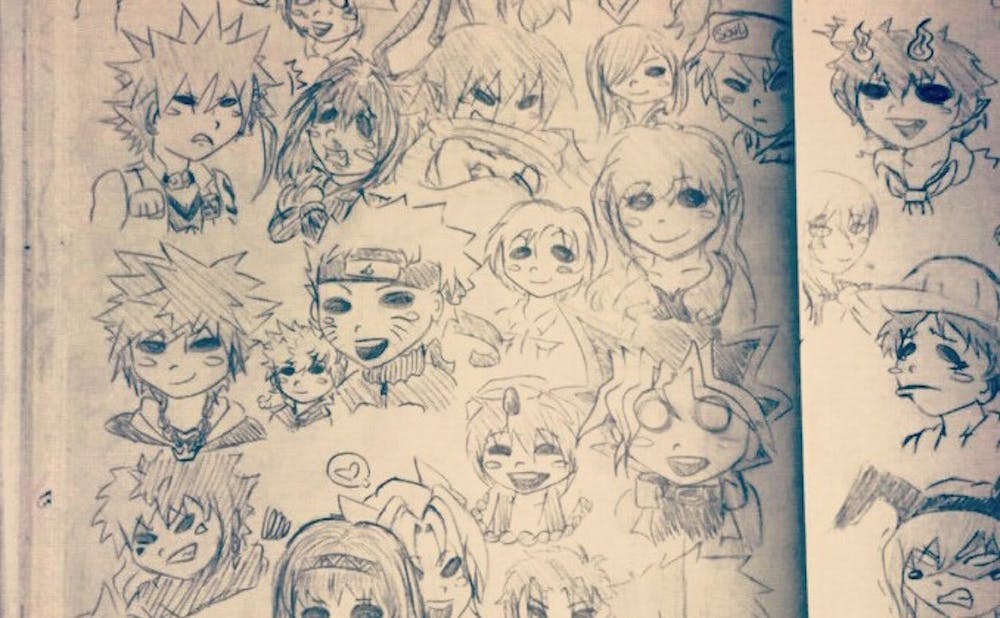Nearly every type of student activity from basketball to tea with strangers has established on Duke's campus. That is, everything except the Duke Anime Club, an entity that has long disappeared from the student body's memories. All that exists in testimony to the anime club's existence is an abandoned website address that links to a page "Err Connection Timed Out." Despite the disappearance of the Duke Anime Club, anime fans themselves have a strong representation among the student body.
The reason for this contradiction has much to do with the evolution of anime and the industry as a whole. Anime, which is rooted in post World War II Japan, was born out of necessity due to the limited budget in a war-struck, recovering nation.
"A lot of the repetition, choppiness, stylized faces and movements are things that were budget driven, but then they became thought of as a style," said Eileen Chow, visiting associate professor of Asian and Middle Eastern Studies. "That's how we see anime."
Anime clubs were originally founded with the main purpose to allow members to purchase and trade discs with one another, a cause that has become largely obsolete with the advent of online streaming. Despite the significant number of anime watchers around the world, very few actually purchase physical discs or pay for memberships with legal streaming sites such as Crunchyroll, on which shows' availability are limited in certain countries. Many watchers today rely on pirated and illegally streamed anime.
"To be honest, I think it's a habitual thing grown from the demographic trending... I would wager to say most anime viewers start at a young age. At this age it's unlikely for these viewers to have money all the time to pay for a service to support the industry," said freshman Naijiao Zhang.
For others, illegal streaming is the only means of getting around lack of availability. In China in particular, popular shows such as Death Note, Attack on Titan and Sword Art Online have been blacklisted due to claims that they include scenes of violence, pornography, terrorism and crimes against public morality.
"A couple years ago, when I started watching anime, there were only illegal sources available to me in China, as far as I knew," said freshman Xiaoyang Liu, who had not heard of Crunchyroll until arriving at Duke.
Senior Ouwen Huang also noted that many illegal sites also have a larger selection.
Without the reliance on physical copies of anime, physical gatherings have died down and most watchers can simply go about watching on their laptops or phones. The element of community watching, which also builds a sense of belonging among the quirky but diverse hardcore fans, is lost. The demise of the Duke Anime Club reflects an unsustainability stemming from lack of communal cohesiveness. Once in a while there are unofficial micro gatherings of anime watchers, perhaps due to the allure of a larger resolution TV. But it is usually not done out of necessity.
Other advancements to the production of anime have been made. Animation budgets have expanded tremendously, introducing computer generated imagery and more advanced 2D animation techniques. To fans who have their childhoods rooted in 1990s shows such as Dragon Ball Z or Cowboy Bebop, both shows that possess an older, stylistic tone and stay faithful to hand drawn 2D frames, many computer generated effects appear jarring against the tradition of hand-drawn frames. In particular, poor quality CGI characters or animals can appear as though they are photoshopped onto a background.
"[CGI] diminishes my watching experience because I end up focusing more on how the animation could be better as opposed to something like character development or plot progression," said freshman Ada Zhang.
Common themes and art styles have also morphed. For example, the large eyes that often take up half the size of a character's face were not always iconic images. From the 1980s to the 2000s, character eyes have grown from fairly humanly proportional sizes to the enlarged size they are today.
"The style is morphing. And CGI is part of that style. But the question is, where is the boundary of acceptability for fans?" Chow said.
Anime warrants discussion, as it accesses a certain sincerity in emotions that other mediums do not. The register of emotions shift very quickly, from comedy to tragedy or happy-go-lucky to death, forcing viewers to grapple with the nature of scenes that they witness. In regards to action or battle scenes, anime is paradoxically more gruesome yet less gruesome than live action films. Audiences also have the knowledge that actors are still alive after their character's death, rendering the suffering or deaths of animated, disconnected-to-reality characters much more real and loophole-less.
These expressed emotions become a community event. Anime is geared toward entertaining its audiences and its goal is to solicit strong reactions that tend to be most beautifully apparent in groups. The anime fan base is not static, as fans' changes in taste drive the industry and consumption. The peculiar result is a currently extinct Duke Anime Club and a continued culture of students and staff who appreciate the many nuances of anime.
Get The Chronicle straight to your inbox
Sign up for our weekly newsletter. Cancel at any time.

